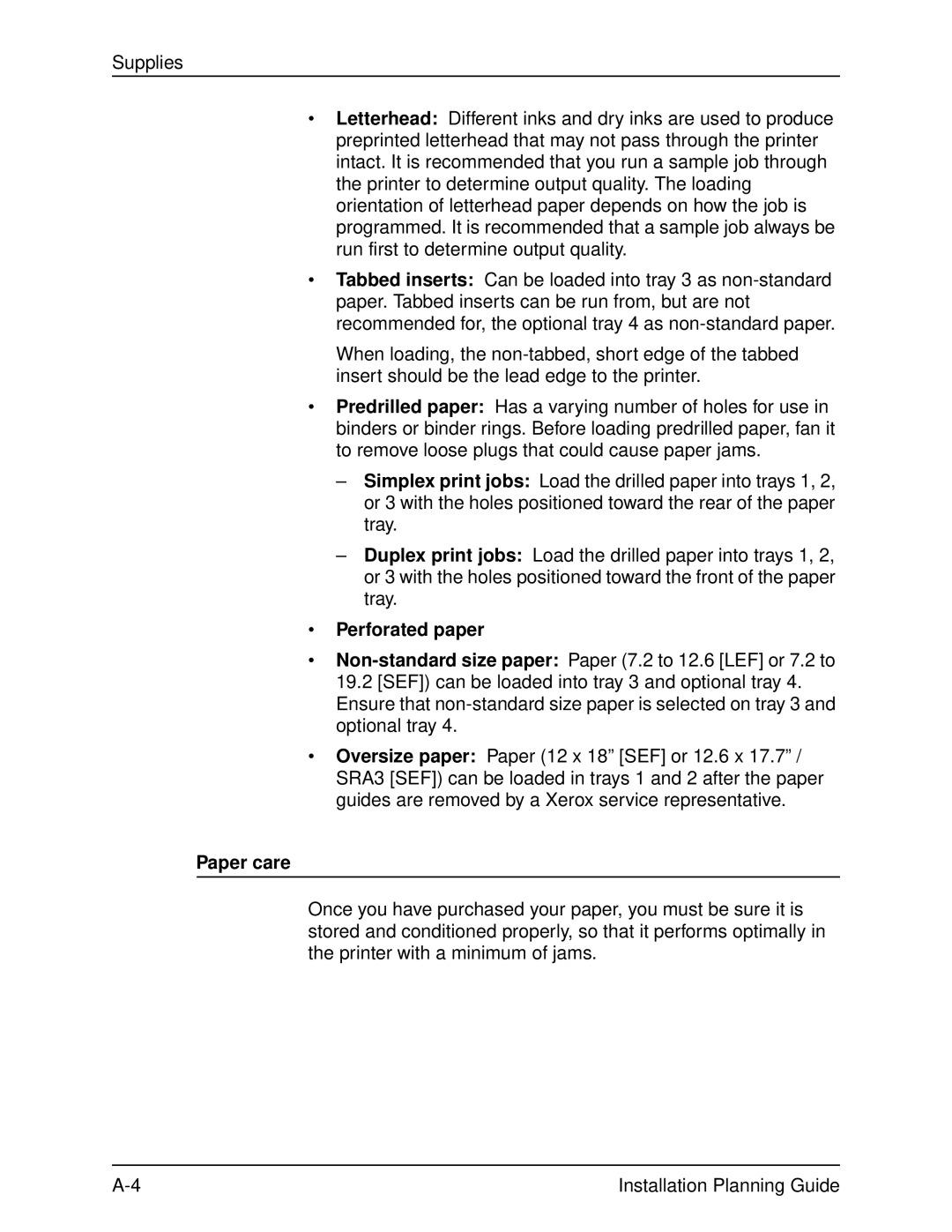
Supplies
•Letterhead: Different inks and dry inks are used to produce preprinted letterhead that may not pass through the printer intact. It is recommended that you run a sample job through the printer to determine output quality. The loading orientation of letterhead paper depends on how the job is programmed. It is recommended that a sample job always be run first to determine output quality.
•Tabbed inserts: Can be loaded into tray 3 as
When loading, the
•Predrilled paper: Has a varying number of holes for use in binders or binder rings. Before loading predrilled paper, fan it to remove loose plugs that could cause paper jams.
–Simplex print jobs: Load the drilled paper into trays 1, 2, or 3 with the holes positioned toward the rear of the paper tray.
–Duplex print jobs: Load the drilled paper into trays 1, 2, or 3 with the holes positioned toward the front of the paper tray.
•Perforated paper
•
•Oversize paper: Paper (12 x 18” [SEF] or 12.6 x 17.7” / SRA3 [SEF]) can be loaded in trays 1 and 2 after the paper guides are removed by a Xerox service representative.
Paper care
Once you have purchased your paper, you must be sure it is stored and conditioned properly, so that it performs optimally in the printer with a minimum of jams.
Installation Planning Guide |
